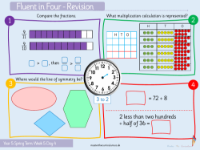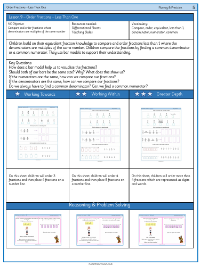Fractions - Order Fractions (Less Than One) - Presentation

Maths Resource Description
In an engaging lesson about ordering fractions with values less than one, students are challenged to think critically about the relationships between numerators and denominators. Initially, the lesson prompts students to consider how to order fractions when the denominators are the same and when they are different. Through a series of activities, they explore ordering fractions by finding common denominators, thereby transforming the problem into a simpler comparison of numerators. For example, fractions like 1/3, 7/18, and 1/2 are converted to equivalent fractions with a common denominator, such as 6/18, 7/18, and 9/18, to facilitate easier ordering from greatest to smallest.
The lesson continues with further exercises that encourage students to apply their understanding in different contexts. In one activity, they are presented with fractions that have the same numerators but different denominators, such as 4/6, 4/5, 4/15, and 4/9. Here, students learn that when the numerators are the same, the size of the denominator determines the size of the fraction pieces—the larger the denominator, the smaller the fraction. This knowledge allows them to order the fractions without converting to a common denominator. Additionally, reasoning tasks challenge students to identify and correct errors in sequences of ordered fractions, deepening their comprehension of fraction ordering. Independent work activities further reinforce the learning objectives, giving students the opportunity to practice ordering fractions both on paper and using a number line.




